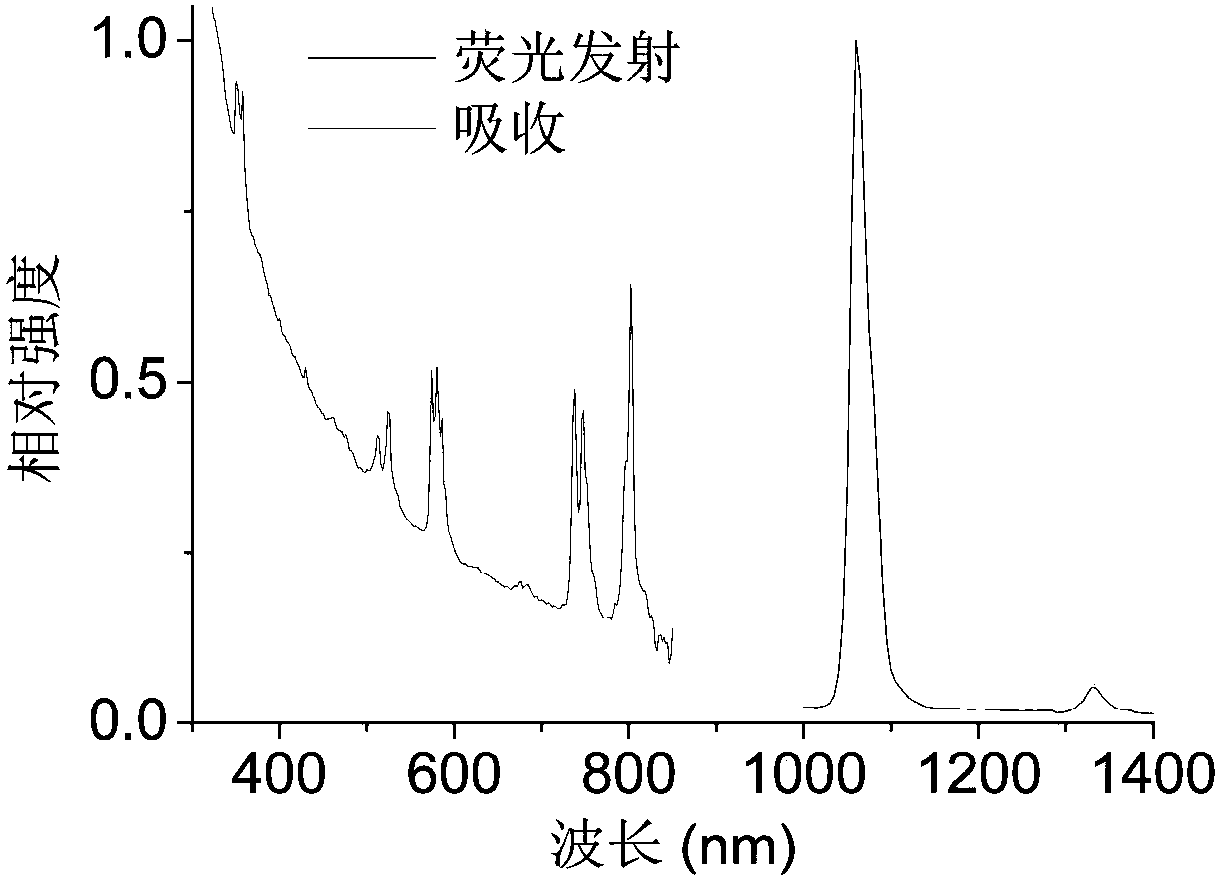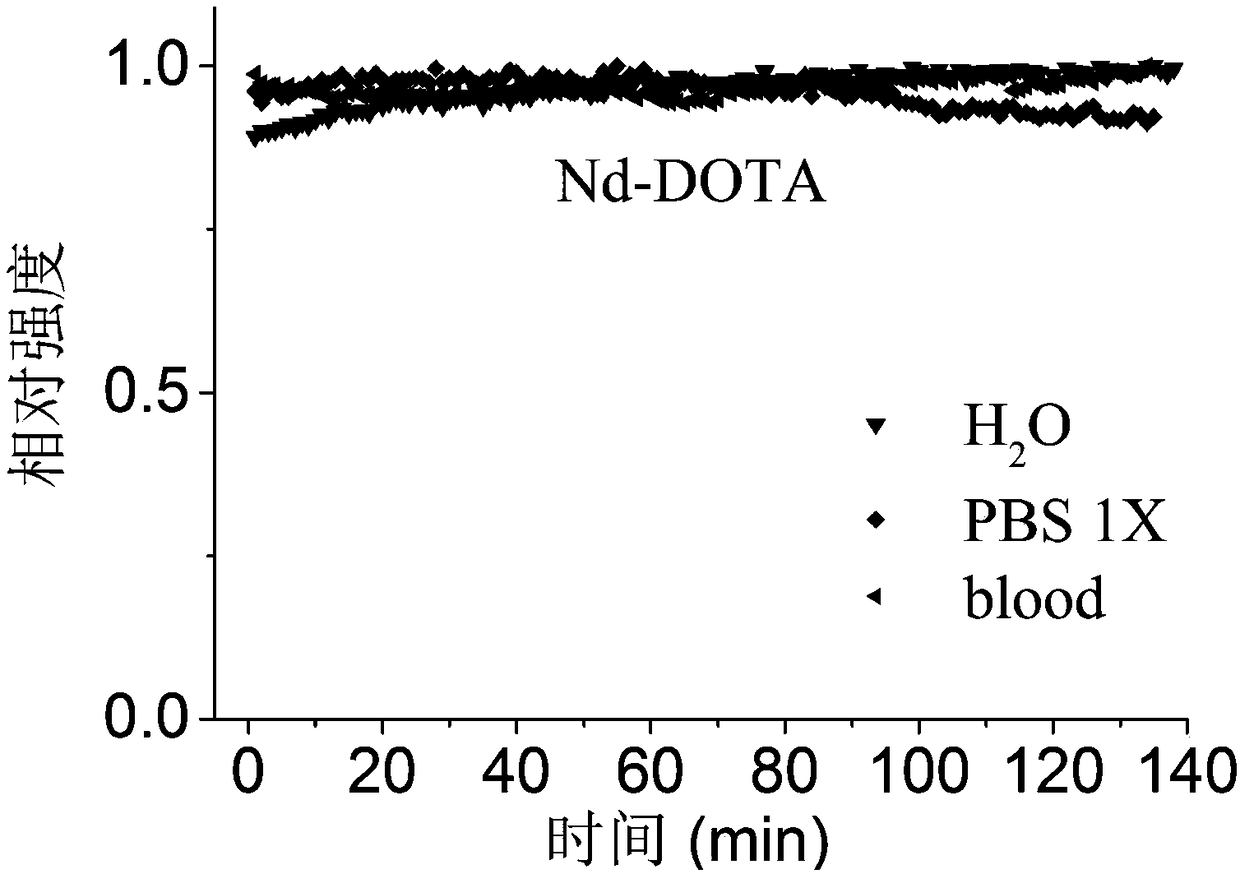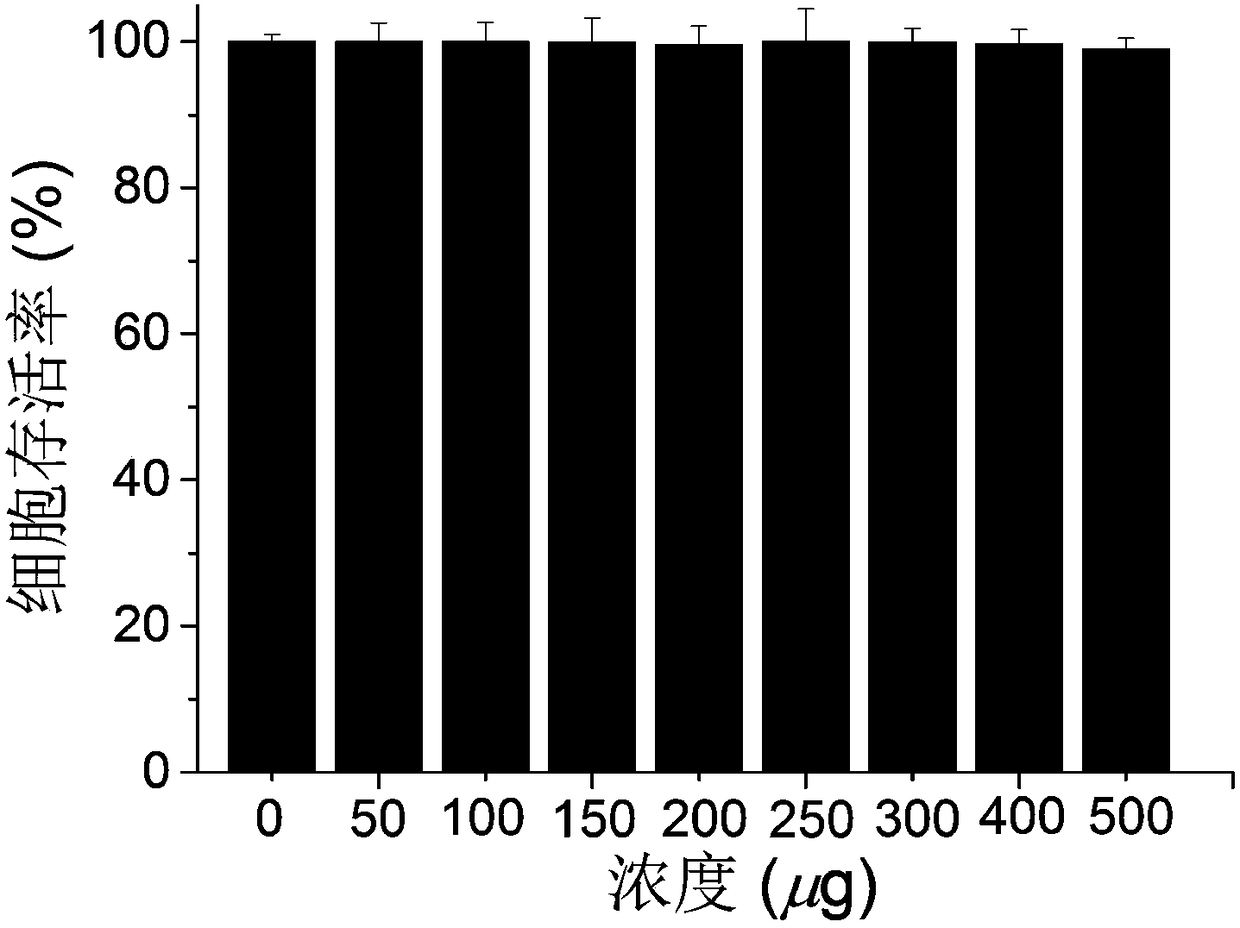Near-infrared second window emitted micro-molecular rear earth complex fluorescence probe and preparation method thereof
A technology of rare earth complexes and fluorescent probes, applied in the field of small molecule rare earth complex fluorescent probes and its preparation, can solve problems such as emission peak width, slow metabolism, and limited application value
- Summary
- Abstract
- Description
- Claims
- Application Information
AI Technical Summary
Benefits of technology
Problems solved by technology
Method used
Image
Examples
Embodiment 1
[0038] Preparation of fluorescent probe molecule Nd-DOTA of small molecule rare earth complexes. Specific steps are as follows:
[0039] Weigh 1,4,7,10-tetraazacyclododecane-1,4,7,10-tetraacetic acid (DOTA) into a single-necked round bottom flask, and dissolve with 1-3ml of water. Then weigh the NdCl 3 ·6H 2 O, dissolved in 1~2ml of water, NdCl 3 The aqueous solution was slowly added dropwise into the DOTA aqueous solution, and stirred at room temperature. Adjust the pH with NaOH solution to make it between 6.0 and 6.5. After reacting for 12 to 24 hours, stop the reaction. Anhydrous ether was slowly added for precipitation. Stand still and filter with suction to obtain a light purple solid powder. The fluorescent probe molecule Nd-DOTA, a small molecule rare earth complex, has strong absorption at 740nm and 802nm in aqueous solution, and is further excited with a laser at 808nm, and can observe the fluorescence emission peaks of rare earth neodymium ions at 1060nm and 1...
Embodiment 2
[0041] Preparation of fluorescent probe molecule Nd-DOTA-NHS of small molecule rare earth complexes. Specific steps are as follows:
[0042] Weigh the DOTA derivative DOTA-NHS ester (DOTA-NHS) into a single-necked round bottom flask, and dissolve it with 1-3ml of water. Then weigh the NdCl 3 ·6H 2 O, dissolved in 1~2ml of water, NdCl 3 The aqueous solution was slowly added dropwise to the DOTA-NHS aqueous solution, and stirred at room temperature. Adjust the pH with NaOH solution to make it between 6.0 and 6.5. After reacting for 12 to 24 hours, stop the reaction. Anhydrous ether was slowly added for precipitation. Stand still and filter with suction to obtain a white solid. The aqueous solution of the fluorescent probe molecule Nd-DOTA-NHS of the small molecule rare earth complex is excited by an 808nm laser, and the strong emission peak of the rare earth neodymium ion at 1060nm and the weaker fluorescence emission peak at 1330nm can be observed (see Figure 4 ).
Embodiment 3
[0044] Preparation of fluorescent probe molecule Nd-DOTA-FA of small molecule rare earth complex. Specific steps are as follows:
[0045] Weigh the solid of Nd-DOTA-NHS into a single-necked round bottom flask, add N,N-diisopropylethylamine (DIPEA) and N,N-dimethylformamide (DMF) (1 / 9), at room temperature Stir, then weigh amino PEG folic acid (NH 2 -PEG-FA), dissolved in 1-2ml of water, slowly added dropwise to the solution of Nd-DOTA-NHS, stirred at room temperature for 12-24 hours, then stopped the reaction, concentrated the reaction solution, washed several times with anhydrous ether, A yellow solid was obtained. The aqueous solution of the fluorescent probe molecule Nd-DOTA-FA of the small molecule rare earth complex is excited by an 808nm laser, and the strong emission peak of the rare earth neodymium ion at 1060nm and the weaker fluorescence emission peak at 1330nm can be observed (see Figure 5 ).
PUM
 Login to View More
Login to View More Abstract
Description
Claims
Application Information
 Login to View More
Login to View More - R&D
- Intellectual Property
- Life Sciences
- Materials
- Tech Scout
- Unparalleled Data Quality
- Higher Quality Content
- 60% Fewer Hallucinations
Browse by: Latest US Patents, China's latest patents, Technical Efficacy Thesaurus, Application Domain, Technology Topic, Popular Technical Reports.
© 2025 PatSnap. All rights reserved.Legal|Privacy policy|Modern Slavery Act Transparency Statement|Sitemap|About US| Contact US: help@patsnap.com



